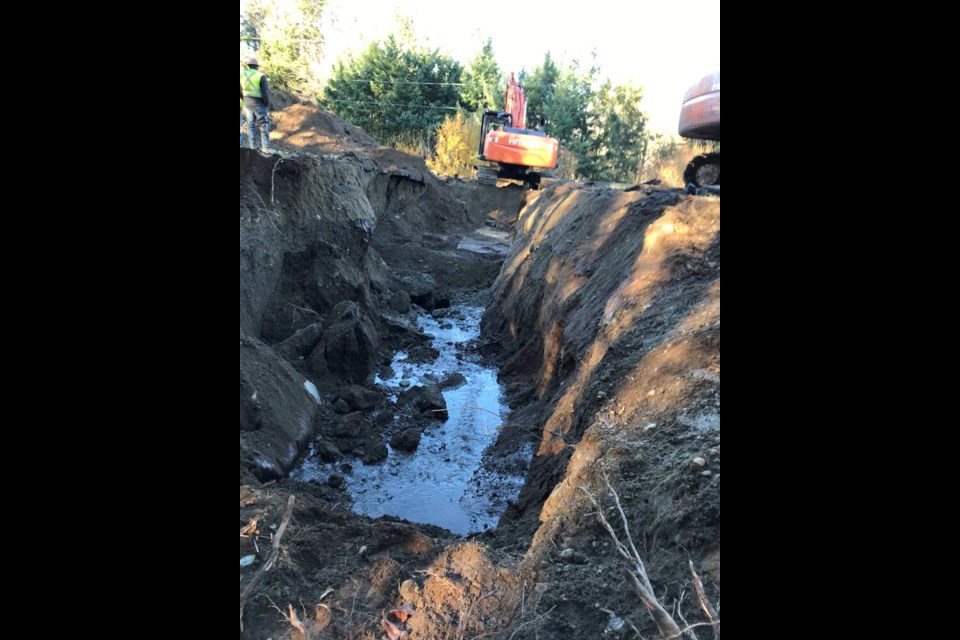Although two-lane traffic has been flowing in both directions on the Malahat since Friday evening, the highway is still an active construction site, Transportation Minister Rob Fleming stressed Saturday at an emergency management press conference.
“Repairs are continuing and will continue for a number of months. Drivers need to be prepared for ongoing delays,” said Fleming, thanking those who have worked day and night to get the highway open.
Heavy rain and floods led to the closure of the Malahat in both directions Monday. It reopened Tuesday morning to single-lane alternating traffic. From Tuesday through Thursday, it was fully closed nightly from 6 p.m. to 6 a.m. to allow crews to repair the extensive damage.
Fleming was hopeful Highway 19 north of Nanaimo could reopen Saturday evening. The highway had been closed since Thursday afternoon because of a sinkhole.
“We’re still asking drivers to avoid that area of Highway 19,” he said. “Although there is a detour in place, the detour can be quite long.”
Like the Malahat, repairs on the sinkhole will likely take months and further closures will be needed for significant work periods, he said.
The public will be notified of any work in advance, Fleming said. He advised drivers to check drivebc.ca for updates on the status of work and any closures.
Deputy premier Mike Farnworth, minister of public safety and solicitor general, took the opportunity to urge people to follow the province’s recommendations to limit fuel usage and to avoid non-essential travel on the hardest-hit sections of Highway 99, Highway 3 and Highway 7, which connect the Lower Mainland with the Interior and northern B.C.
Drivers in southwest B.C. — including Vancouver Island — are limited to 30 litres of gas per visit for non-essential vehicles.
“If you can avoid travel, work from home or take public transit for the next 10 days, you will help ensure that we will have the fuel and access and means to keep responding as we need to,” Farnworth said. “Right now, we all need to do our part to make sure emergency and essential vehicles can do their jobs.”
The temporary limits on non-essential fuel consumption will help keep commercial traffic moving, stabilize supply chains and make sure everyone gets home safely, he said.
“Over the next 10 days, we know we have enough gas for essential vehicles and everyone else who needs it if we are prudent and conserve where we can,” Farnworth said.
He also urged people to pay close attention to weather warnings, given the unpredictability of climate change. Environment Canada has issued a winter storm advisory for the north coast with heavy precipitation and wind in the forecast for this weekend. More rain is expected Sunday, Farnworth said.
“I encourage people to think about how to prepare for stormy weather in the weeks and months ahead,” he said.
Farnworth said he spoke with Environment Canada Saturday morning and learned they are speeding up development of a new ranking system for atmospheric rivers to help people be better prepared for everything from localized flooding to big storm events. The new approach is based on a system already used in the U.S., he said.
The deputy premier also recognizes B.C. residents are looking for ways to support those ravaged by the storm. He suggested donating to trusted organizations such as the Canadian Red Cross, the Salvation Army and B.C. food banks.
ldickson@timescolonist.com





